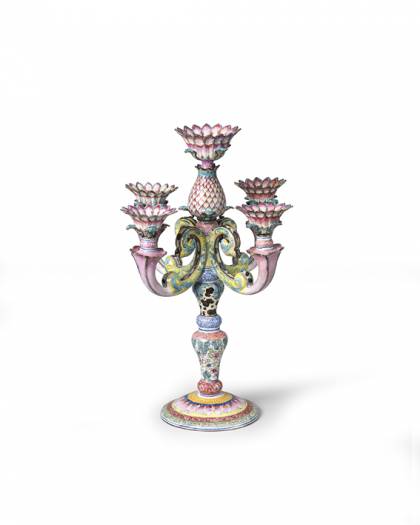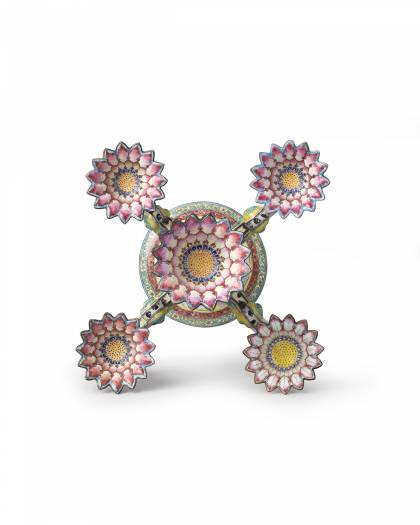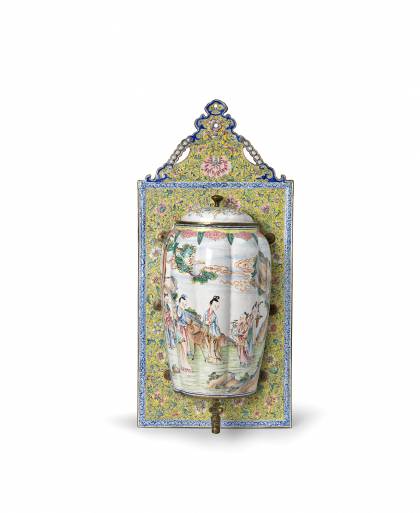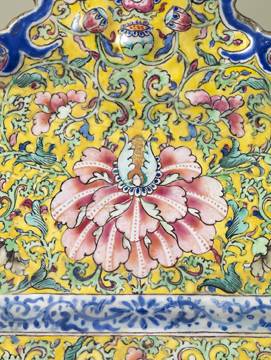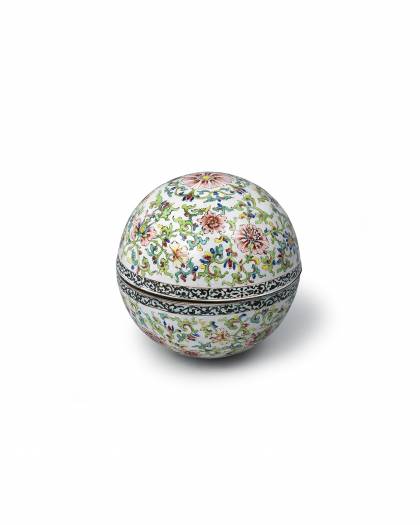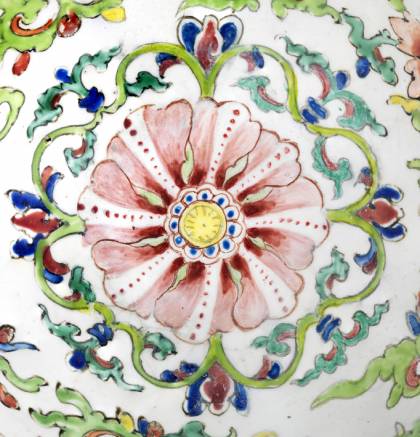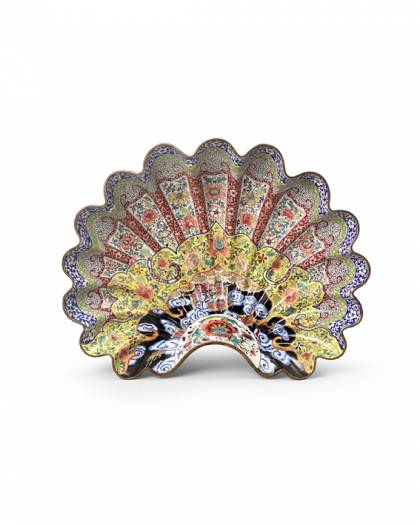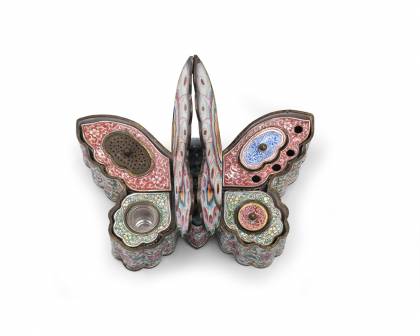Event
China of All Colours: Painted Enamels on Copper
Having put together a collection of over 160 Chinese enamelled copper objects, we are delighted to announce our upcoming exhibition, ‘China of All Colours: Painted Enamels on Copper’. This exhibition will provide an exciting and rare opportunity to see a large number of pieces from this fascinating area within the field of Chinese art, and also explore the formal and decorative similarities with China’s principal artistic export, porcelain.
This intriguing group of objects were developed during the first half of the 18th century, predominately produced in the Qianlong period (1736-1795) and continuing into the 19th century. Made for the export and domestic markets, as well for the imperial courts in Beijing, this type of ware was referred to as yang ci in Chinese—literally ‘foreign porcelain’—becoming known as ‘Canton enamel’ after the main centre of production in China. Produced in relatively small quantities when compared to the production of porcelain, these copper objects were coated with an initial layer of white or turquoise enamel and over-decorated with designs in bright polychrome enamels, some of which are comparable to those found on Chinese porcelain. While porcelain has benefited from much scholarly attention, the subject of Chinese painted enamels on copper remains little explored.
Our aim with the exhibition is to shed light on this fascinating topic, drawing attention to the specific characteristics of the copperwares, the details and quality of the painting, the objects’ various shapes and utilities, while asking questions that will expand our understanding of the production process and trade patterns.
We have dedicated many hours to the study of this large group of Chinese painted enamels on copper, acquired over a long period, and now materialising in the exhibition ‘China of All Colours’, a phrase first used by the British Ambassador, Philip Dormer Stanhope in a letter of 1728. This document is one of the earliest known records of Chinese enamelled copper objects in the West. Today these beautiful copperwares, with a very similar look and feel to that of Chinese porcelain, remain an enticing group, which add value and interest to any collection of artworks from the Qing dynasty. We welcome the opportunity to share this collection with our friends and collectors, and we look forward to your visit.
Some of our highlights of this exhibition include:
• A Wall Fountain
China — Qing dynasty, Qianlong period (1736-1795)
Copper decorated with polychrome enamels
H. 51.5 cm L. 24.3 cm W. 11 cm
A tall, fluted wall fountain with a domed cover and metal tap, fixed to a rectangular panel with a moulded triangular top. It is decorated with polychrome enamels on a white ground, which include yellow, pink, blue, green, iron-red, brown and black. The container is delicately painted with several Chinese ladies in a landscape.
This impressive enamelled copper fountain was probably intended to contain water, and could be used for ablutions or drinking. Up until the 17th century, before forks became a regular addition to the dining table, diners mostly used their hands during meals. As a result, wall fountains were required for diners to wash their hands before or during courses, with porcelain and enamelled copper examples continuing to be produced well into the 18th century. Wall fountains of this type were probably hung on a wall as opposed to being placed on a side table, and may have been accompanied by a matching basin.
There are two enamelled copper wall fountains in the State Hermitage Museum in Saint Petersburg.
• Candelabrum
China — Qing dynasty, Qianlong period (1736-1795)
Copper decorated with polychrome enamels
H. 34 cm L. 22 cm Ø 11.5 cm
A candelabrum with a slender double baluster-shaped stem and five branches, each surmounted by a candleholder moulded in the shape of a lotus flower, and decorated with bright polychrome enamels.
The term candelabra derived from the French term candélabres, translated as ‘trees of candles’. From the mid-17th century, candlesticks were produced in pairs or as larger sets, with pairs of candelabra normally placed at either end of the dinner table. The present candelabrum was probably inspired by a European metal or ceramic prototype.
Painted enamel on copper candelabras are rare, and were most likely ordered through private trade. There is an impressive pair of twelve-armed chandeliers, commissioned in Canton by the Danish supercargo Christen Jensen Lintrup (1703-1772) during his fourth mission to China between 1738 and 1739, in Rosenborg Castle, Copenhagen.
China of All Colours: Painted Enamels on Copper will be on view at the London gallery 6th-14th November to coincide with Asian Art in London.
This year's exhibition will present more than 160 Chinese enamelled copperwares produced during the 18th and 19th centuries, including among others basins and ewers, teapots, snuff boxes and bottles, tea canisters, spittoons, small cups and saucers.
The exhibition then travels to our Lisbon gallery where it will be on display from the 20th November-12th December.
We look forward to seeing you in our galleries.
Catalogue available - English and Chinese editions.
For more information please contact us.
Lisbon gallery: +351 21 395 3375 pt@jorgewelsh.com
London gallery: +44 (0)20 7229 2140 uk@jorgewelsh.com
